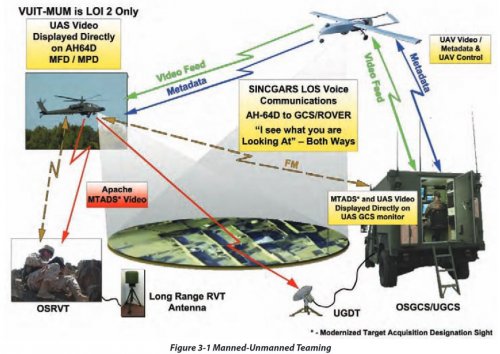Big changes could be on the way for the Army’s aviation brigades, including the divestment of several aircraft such as the OH-58 Kiowa Warrior, said the service’s top aviator.
Army officials are discussing an aviation strategy that would use AH-64 Apaches, teamed with Shadow and Gray Eagle unmanned aerial systems, to conduct the scouting missions currently flown by the Kiowa, said Maj. Gen. Kevin Mangum, commanding general of the Aviation Center of Excellence and Fort Rucker.
"You can imagine the love notes I've gotten over that, [but] scouting is a mission, not a platform,” he said at a Jan. 14 speech.
Under this plan, the service would also divest the TH-67 training aircraft and use UH-72 Lakota light utility helicopters. An estimated 898 OH-58 A/C, OH-58 D and TH-67 aircraft would be mothballed.
In order to have enough aircraft to fill requirements, the Army would move all reserve Apache aircraft into the active force, he said at an Association of the United States Army conference. In return, reserve components would gain 159 UH-60 Black Hawk helicopters for lift and medical evacuation.
Officials acknowledged that aspects of the strategy are likely to be unpalatable to certain parts of the Army aviation community, but such measures were necessary to protect aircraft modernization programs, they said.
“We ought to be shot if we … cut up one modernized platform,” said Maj. Gen. Tim Crosby, the outgoing program executive officer for aviation. “There are going to be folks that are going to criticize [us] for what we recommended. I got it. … We worry about that soldier having something they need, that they can sustain, maintain and rely on in combat, and that’s the process we looked at.”
At this point, the service is not considering any changes to the Apache program, such as the purchase of additional aircraft or the acceleration of E-model aircraft procurement, Mangum said.
Apaches cost more and burn more gas than Kiowa Warriors, Mangum said, but "we don't have the money today to do anything differently. It's going to cost us more money in the long run if we keep the old stuff at this point, because we're going to be throwing money at platforms that really will not be economical to keep in the force."
For the past couple years, the Army has been searching high and low for a solution on how best to accomplish airborne reconnaissance missions.
Bell Helicopter, which manufactures the OH-58, touted continued upgrades and life extensions as the most cost-effective way to fulfill the scout helicopter requirement.
Another option was to buy a brand new aircraft through the armed aerial scout program. Boeing, AgustaWestland, Bell and EADS North America, which has been rebranded as Airbus, flew aircraft during a 2012 demonstration to the Army. Sikorsky’s S-97 Raider has also been floated as a possible Kiowa replacement, but it is not scheduled to fly until this year.
Army leaders in 2012 believed procuring new aircraft was the best choice, Mangum said.
“What a difference a year makes,” Mangum said. After sequestration and continued fiscal constraints in 2013, officials realized that both options were too expensive.
A new armed aerial scout helicopter could cost upwards of $16 billion, Mangum said. A cockpit and sensor upgrade program and service life extension for the Kiowa would cost $3 billion and $7 billion respectively.
"Not a good value proposition. Really it was going to be putting new shoes on an old horse for $10 billion. Oh, by the way, we don't have that $10 billion,” he said.
The Army will be able to meet 80 percent of its armed aerial scout requirements using existing Apaches and UAS, Mangum said. The current Kiowa fleet can only accomplish 20 percent of armed aerial scout missions, while an upgraded OH-58 would be able to accomplish 50 percent, he said.
The Kiowa Warrior’s cockpit and sensor upgrade program is already under way, but if Army leaders sign off on the strategy, all work on the initiative would come to a halt, Mangum said.
A requirement for an armed aerial scout helicopter would stay on the books, he said. Whether that gets filled will depend on what aircraft is available when the Army has money to purchase new aircraft. Increased speed, range and payload, as well as the ability to fly 6,000 high at 95-degree temperatures, would continue to be AAS requirements.
Crosby said he didn’t know whether the Army would revisit the armed aerial scout competition at a later date. Even if it doesn't reopen the competition, the service will eventually procure a new scout helicopter as part of the future vertical lift program, a family of rotorcraft that will replace current systems.
In order to fill UH-72 requirements at Fort Rucker, aircraft from the active and reserve components — including about half of the National Guard’s fleet — will be moved.
Mangum said the UH-72 would be a good fit for pilots training to fly the Apache, Black Hawk and Chinook helicopters that will be a staple of the fleet for the next decade.
"The fact that it's a glass cockpit, a digital cockpit, a dual engine aircraft will help our youngsters transition more readily to those modernized platforms, the AH-64E, the UH-60M and the CH-47F,” he said.

